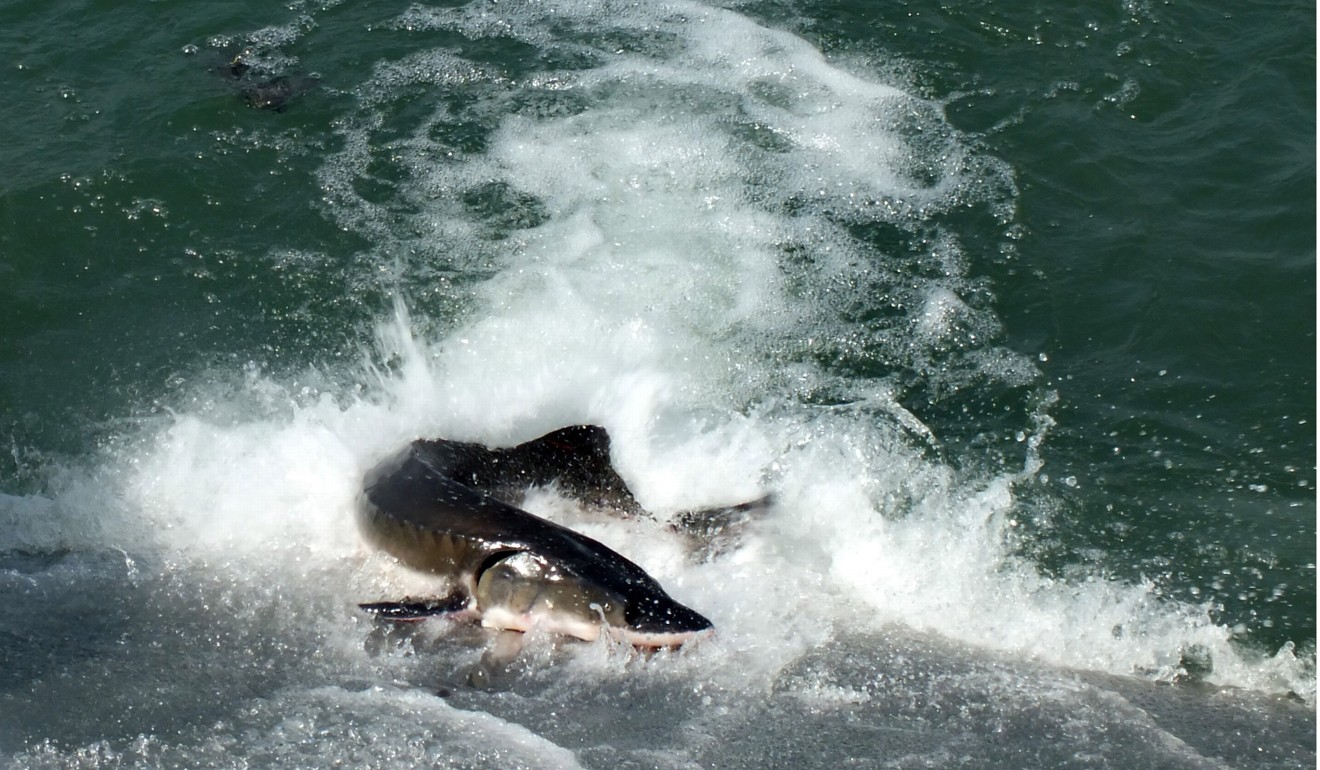
China bans fishing in depleted Yangtze River for 10 years to protect aquatic life
- Agriculture vice-minister says waterway has seen ‘across-the-board decline’ in populations of rare species such as Chinese sturgeon
- Moratorium aims to revive fish stocks and curb biodiversity degradation
China has imposed a 10-year commercial fishing ban on the Yangtze – the first ever for Asia’s longest river – in a bid to protect its aquatic life.
Facing dwindling fish stocks and declining biodiversity in the 6,300km (3,915-mile) river, the Chinese government decided seasonal moratoriums were not enough. The ban took effect on Wednesday, and will be applied at 332 conservation sites along the river. It will be extended to cover the main river course and key tributaries by January 1 next year, according to a State Council notice.
“The Yangtze is a major river in the world in terms of its aquatic species diversity. It is also an important shield for protecting our country’s ecology and improving conservation in the … region,” Yu Zhenkang, vice-minister of agriculture and rural affairs, was quoted as saying by Xinhua on Wednesday.
“The fishing ban is a key measure to effectively curb the decline of the river’s ecosystem and any further drop in biodiversity,” Yu said.
He added that dam-building, pollution, overfishing, river transport and dredging had worsened the situation for the waterway’s aquatic species. As a result, the Yangtze had seen an “across-the-board decline” in populations of rare species such as the Chinese sturgeon, which is critically endangered.

Speaking at a regional development conference in April 2018, President Xi Jinping warned that the Yangtze River had become so depleted that its biodiversity index was as bad as it could get, saying it had reached what could be described as the “no fish” level.
Cao Wenxuan, a marine biologist with the Chinese Academy of Sciences’ Institute of Hydrobiology, has been campaigning for a 10-year fishing ban on the river since the early 2000s. He said the moratorium was urgently needed and brought hope that fish stocks could be revived.
“When we talk about the Yangtze having that ‘no fish’ status, it doesn’t literally mean there isn’t a single fish, but that fish stocks are in a dire situation,” Cao said. “There’s far fewer fish than [there were] decades ago. What’s more, the fish being caught now are much smaller and weigh much less than before.”
Two endangered Chinese finless porpoises found dead in Yangtze River as species struggles for survival
The degradation of the river’s ecosystem has had a significant impact on China’s fishing industry, according to the Xinhua report. Back in 1954, the annual catch from the Yangtze was about 427,000 tonnes, but in recent years it had been less than 100,000 tonnes.
Yuan Wenbing, a 49-year-old fisherman in Yugan county, Jiangxi province, told Guangming Daily that he often caught 35kg fish in the early 1990s. Now, they never weighed more than 5kg.
He said the problem of dwindling fish stocks had been made rapidly worse by fishermen using nets with smaller holes and illegal practices such as the use of explosives or electrocution.
Cao also said overfishing had exacerbated the environmental problems and “created a vicious circle”.

According to an official estimate, about 280,000 fishermen in 10 provinces along the Yangtze River will be affected by the ban. Their 113,000 registered fishing boats will be grounded or destroyed. The government has allocated funds to help those affected find alternative work and provide them with welfare and retraining.
But the ban was not expected to affect consumers, according to Xinhua, since the annual catch from the Yangtze accounted for just 0.32 per cent of the country’s freshwater seafood supply.
Cao said one of the ban’s aims was to revive some of the river’s wild fish species. “Over the next 10 years, some of the fish will be able to reproduce two to three new generations,” he said.
He said the seasonal fishing ban on the Yangtze introduced in 2003, which ran for three to four months every spring, had not been adequate to protect the river’s aquatic life as it was too short.
“As soon as it ended every year, it was a bonanza for the fishermen. But they only caught small fish, some were only 10cm long, and … many people would process these fish fry into animal feed,” he said. “It caused serious damage.”
How China is breeding a beetle army to defend the Three Gorges Dam from plant invasion
Ren Wenwei, water practice head at WWF China, welcomed the new ban, and said fish stocks could return to previous levels if they were given a chance to “breathe and rehabilitate”.
Vice-minister Yu said over the next decade there would be efforts to restore fish habitats in the river as well as breeding programmes for species like the Chinese sturgeon. To counter illegal fishing, he said river authorities would be equipped with speedboats, drones and video surveillance systems. Fishermen would also be recruited to patrol the river.
But for those being asked to give up a lifetime of fishing, it will not be easy.
“Some people get seasick, we get ‘landsick’,” fisherman Long Kaiyun, 55, told Xinhua.
Long said he was reluctant to move ashore from his fishing boat in Nan county, Hunan province.
“The government has allocated housing for us, but we rarely spend the night there,” he said. “When we sleep in a bed [on land] we feel like the floor is moving.”

